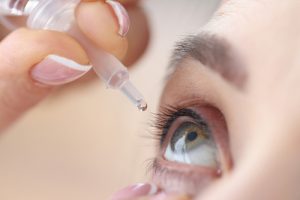
It’s not unusual for your eyes to feel dry at times, and there are many reasons why they may feel that way. If you have allergies, they may feel irritated this time of year, especially since it’s hay fever season.
However, you may be experiencing a chronic eye condition known as dry eye syndrome. When left untreated, dry eye syndrome can lead to serious eye health issues and even vision loss.
If your eyes feel dry, it’s essential to see an eye care professional for proper diagnosis and treatment. Keep reading to learn more about why your eyes may be so dry right now!
What Are Some of the Most Common Dry Eye Symptoms?
Your eyes feel dry when they aren’t producing adequate tears. Your tears are composed of three layers: the inner layer is mucus, the middle layer is water, and the outer layer is oil.

When your eyes produce tears that are lacking in one of these layers, your eyes don’t get enough moisture. This can cause a few symptoms, which include:
- Irritation
- Burning sensation
- Light sensitivity
- Excess tearing or watering
- A gritty feeling, like there’s something in your eye
Your eyes may also feel a little itchy, but itchy eyes are primarily a symptom of allergies. You may have both allergy symptoms and dry eye symptoms, though, and the combination can make your eyes feel even more irritated.
It’s possible your eyes are temporarily dry due to environmental factors, but it’s also possible that you have dry eye syndrome.
What is Dry Eye Syndrome?
Dry eyes may be caused by dehydration, dry weather, or contact lens irritation, as well as other temporary environmental factors. However, often dry eye symptoms are due to dry eye syndrome.

Temporary conditions may worsen dry eye syndrome, but the symptoms won’t entirely disappear when the environmental factors are removed. Dry eye syndrome is more common in older individuals, especially women.
It’s also common in women experiencing hormonal changes like pregnancy or menopause. However, anyone can develop dry eye syndrome. It’s also often related to certain ocular surface conditions.
Your ocular surface is the layer of tissue that lines your eye and the inside of your lower and upper eyelids. This layer is covered by a tear film which is necessary to keep the ocular surface healthy.
The ocular surface can become inflamed due to certain conditions, like blepharitis, which can lead to dry eye syndrome. The only way to know if you have dry eye syndrome, let alone what’s causing it, is to see an eye doctor for diagnosis and treatment.
What Treatment Methods Are Used for Dry Eye Syndrome?
One way to assess the quality of your tears is through a test called TearLab. This device takes a sample of your tears and measures their composition, allowing your eye doctor to see where your tear quality may be lacking and what may be causing it.
Once you’ve been diagnosed, your eye doctor can recommend treatment accordingly. There are a variety of non-invasive treatments for dry eye syndrome that we can offer:
Home Remedies
Often, dry eye symptoms can be alleviated by over-the-counter medication and simple lifestyle changes. Your eye doctor may recommend you try some of these home remedies before prescribing more intensive treatment.
Nutritional deficiency may play a part in dry eye syndrome. Getting more Omega-3 in your diet can aid in tear production.
This nutrient can be found in fish, flaxseed, chia seeds, and walnuts. You can also take it as a supplement with fish oil or flaxseed pills.

Putting a humidifier in your home may help with your symptoms by making sure the air isn’t too dry. Drinking plenty of water and wearing sunglasses outside can also help.
As for over-the-counter medication, you can use artificial tears for immediate relief. You can also use eyelid wipes to keep your eyelids clean, which can help with inflammation.
These various at-home treatment options can significantly alleviate your symptoms, but they may not be enough on their own. In such cases, medication and other professional treatments may be warranted.
Medication
The most common medications for dry eye syndrome are Restasis and Xiidra. These are both prescription eye drops that aid in tear production.
Your doctor may prescribe them to you in addition to using over-the-counter artificial tears.
Prokera
Prokera is a therapeutic device that’s used to treat inflammation. Reducing inflammation can reduce dry eye symptoms, as inflammation is often the root cause.
Prokera comes in the form of a contact lens that’s made from amniotic tissue. Your doctor places it on top of your eye and removes it three to four days later.
This is done right at the office and requires no surgery. Patients who use Prokera usually experience immediate relief and long-term benefits from using the device.
Punctal Occlusion
When other treatments for DES are ineffective, this punctal occlusion may be the best solution. This procedure is simple, requires no surgery, and can be done in your doctor’s office.
Your doctor places tiny plugs into your puncta, which are the tear ducts located right in the corner of your eyes near your nose. This is where tears naturally drain, so by blocking off these ducts, your tears are forced to stay on the surface of your eye longer, compensating for poor tear quality.
Do you want to learn why your eyes feel dry and irritated all the time? Schedule an appointment at Sierra Nevada Eye Center in Carson City, NV, today so you can get a treatment plan to finally get relief!


